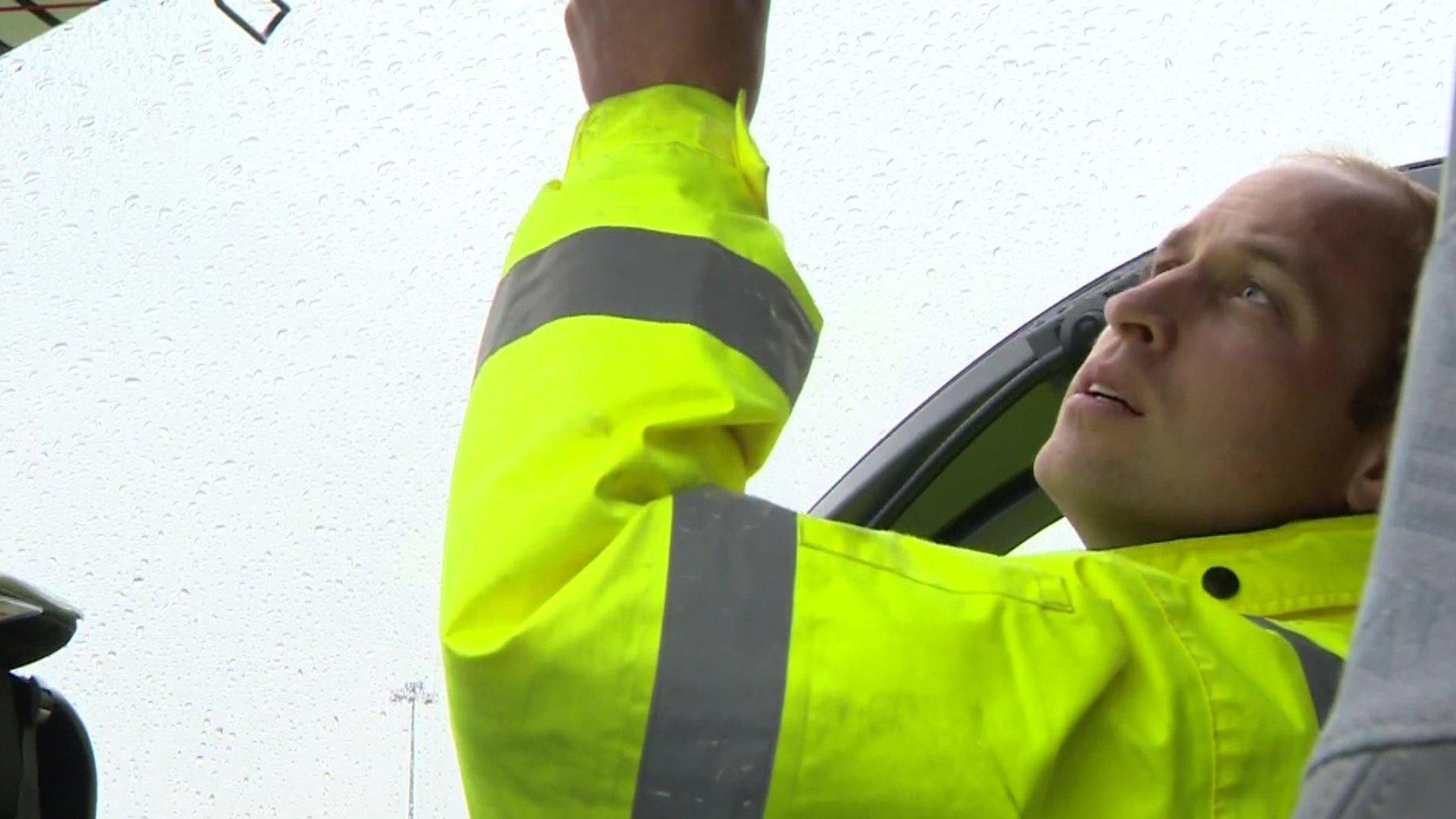Prince William's job: What's it like being an air ambulance pilot?
- Published
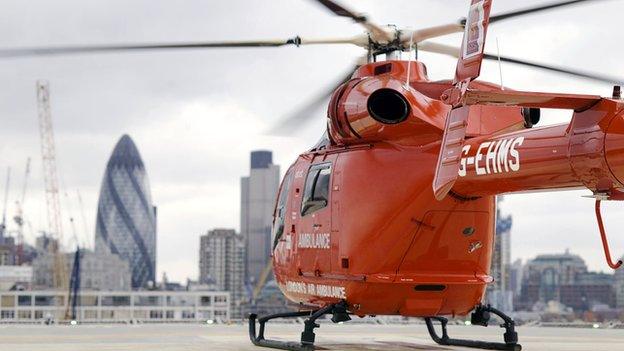
The Duke of Cambridge has started his new job as an air ambulance pilot. But what does the job involve and who can do it?
Prince William has joined the ranks of more than 100 air ambulance pilots working across the UK. They come from a range of backgrounds - including commercial pilots, ex-military personnel, as well as the occasional member of the Royal Family.
"Quite a number are from the military," says Clive Dickin, national director of the Association of Air Ambulances.
Typically each pilot is required to have at least 1,500 hours flight experience before taking up the post, he says.
And even the most experienced military pilot needs additional training before being allowed to pilot an air ambulance.
"If the pilot has a military pilot's licence then they would need to convert it to a civil pilot's licence," Mr Dickin says. "Then of course they need to be trained on the specific operation of the aircraft."
The UK's Civil Aviation Authority says it assesses applications for the commercial licence required to fly an air ambulance on a "case by case basis", depending on what qualifications or experience pilots already have.
Prince William - a former RAF search and rescue pilot - passed his civilian pilot course in September.
He then underwent dedicated 999-response training in order to take up his role with the East Anglian Air Ambulance (EAAA).
To gain this licence the prince had to complete five months' training, followed by 14 exams and a flight test.
Pilots are reported to earn about £40,000-a-year. Prince William has already said he will donate his salary - which has not been disclosed - to charity.
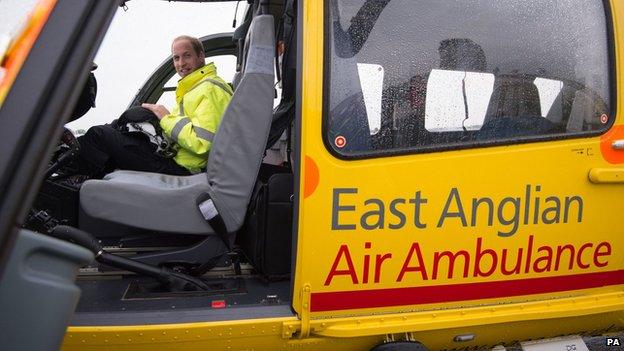
Prince William will be flying the Airbus H145 based at Cambridge Airport
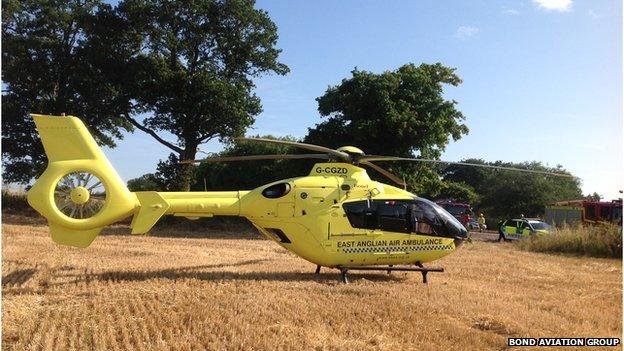
The prince will cover Norfolk, Suffolk, Cambridgeshire and Bedfordshire in his role
According to the EAAA, a typical day for its pilots begins with a detailed check of weather forecasts and by inspecting the helicopter to make sure it is fit to fly.
The "meticulous" inspection includes examining the engines, rotors and body, as well as inspecting the pipes to ensure there are no leaks.
The pilot then briefs the team's medical crew on any issues from the weather reports, as well as aviation warnings and any potential problems with helipads at hospitals.
"They will also do planning, such as looking at fuel levels and locations they can refuel at," says Mr Dickin.
"They do a daily briefing in the morning and they will go through weather, aircraft functions and any other items with the crew. Then of course they fly the missions."
'Airborne in 90 seconds'
When a call does come in - and once it's decided the team will be sent to the emergency - the pilot gets the helicopter started and ready to fly.
When a call is received by the service the air ambulance team is tasked to attend the emergency - the pilot's job is to get the helicopter started and ready to fly to fly the medical crew to the incident.
Often aircraft are airborne and en-route to a patient within 90 seconds of a call coming in.
Then comes the decision of where to land.
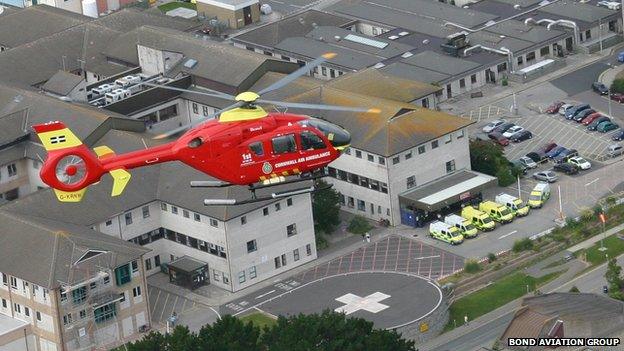
The cost of running the 20 air ambulance charities is about £120m per year - all raised through donations
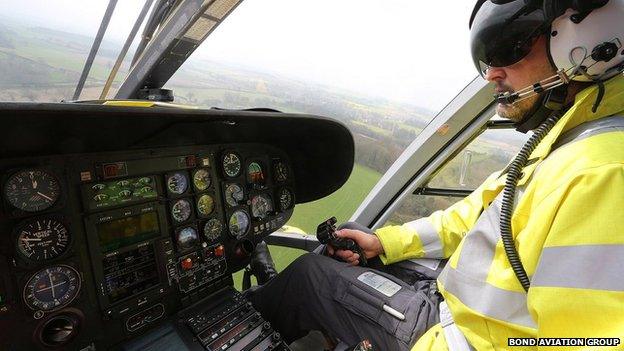
The UK's air ambulances fly hundreds of missions every year
Aircraft often have to land in fields, in the middle of motorways and even in people's back gardens.
Mr Dickin says pilots can - and occasionally do - offer assistance to the aircraft's medical crew while attending an emergency, though they are not trained in any aspects of the clinical activity.
"They will occasionally assist and help by carrying bags and equipment. They do form a valuable part of the clinical team, but their primary role is making sure the aircraft is safe at all times," he explains.
Patients will then be flown to hospital.
Charity donations
Shifts depend on whether or not the aircraft is operational 24-hours a day, but the EAAA says Prince William is likely to work four days on, four days off and cover one of two shifts - from 07:00 to 16:30, or from 16:30 to midnight (royal duties permitting).
Pilots work within flight rules, Mr Dickin says, and can only fly for a limited number of hours before requiring a period of leave.
He says there are now 20 air ambulance charities and one ambulance service, which between them operate 37 aircraft. Each organisation typically has about three pilots for each aircraft.
Prince William is one of 86 pilots provided by Bond Air Services, the helicopter operating company that also provides aircraft and ground engineers to many of the air ambulance trusts.
The Air Ambulance Association says the cost of running the 20 air ambulance charities is about £120m a year - all of which is raised through donation as there is no central government funding.
In 2013 - the latest figures available - the UK's air ambulances flew 14,000 missions up and down the country.
For an air ambulance pilot, it seems, their job is rarely quiet.
- Published13 July 2015
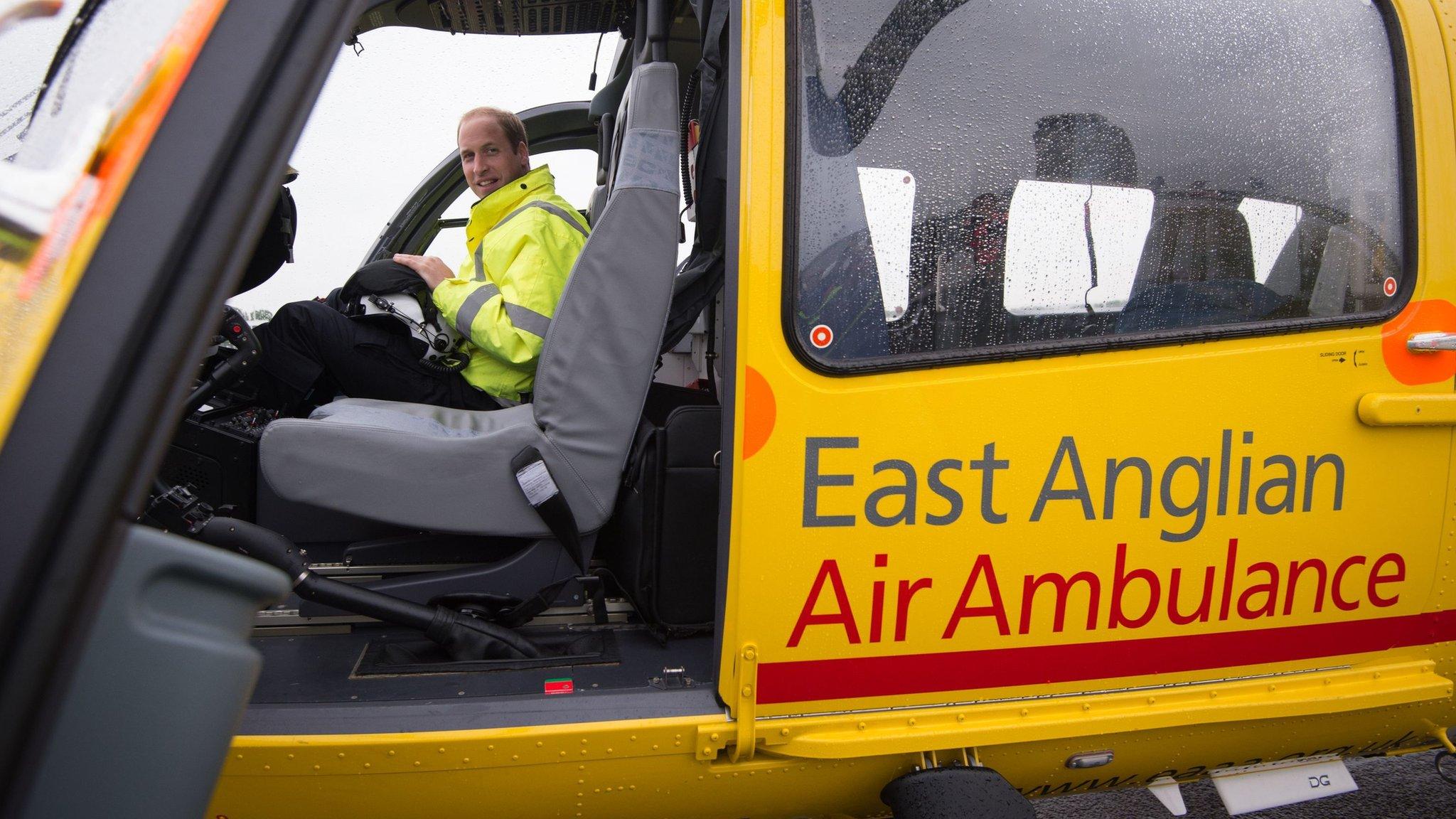
- Published13 July 2015
